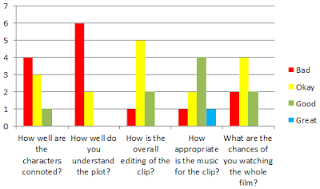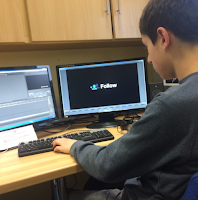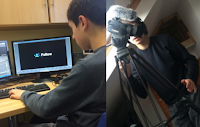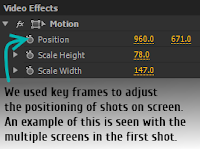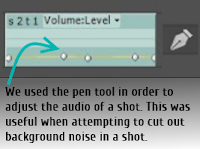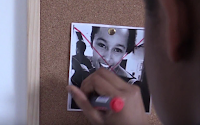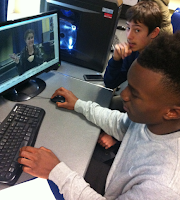Throughout the opening sequence to our film, we followed and developed as many conventional features of psychological thriller films as possible, as well as following examples from the horror genre and other British productions. In order to achieve this, we ensured that we referred closely to form and style, genre codes and narrative structure – as well as to various media theories such as Todorov's equilibrium theory, Propp's archetypes and Barthes' narrative codes.
Form:
We felt that we largely followed the conventional format of similar opening sequences to psychological thriller films...
Characterisation:
A main reference point throughout the project was 'One Hour Photo', and in particular the characterisation of main antagonist Sy Parrish as a conventional villain in a film of a similar genre to ours. Immediately represented as a disturbed, unnerving character via the opening scene in a police interview, within 'One Hour Photo' the audience is presented with many tense or potentially problematic situations where the character's truth may be uncovered.
A central inspiration for characterisation was the character Sy Parrish from One Hour Photo.
Throughout our own opening sequence, we followed this convention, including a number of shots revealing a typically unstable and unnerving character...
Music:
We ensured that our music would be conventional in that it would be an integral part of the sequence to instill a sense of suspense and tension. Similar soundtracks in other psychological thrillers, 'The Machinist' and 'Kill List' use sudden crescendos to good effect to create tension and we felt that our track, 'Saw the Devil' achieved similar.
Grading:
Admittedly, we didn't have as many grading references as other aspects of our opening sequence. However, we kept in mind a strong idea that we wanted to use cool tones of a blueish hue to create a cold mood - especially with the highlights prevalent throughout our sequence. We also wanted to reduce our shots' saturation using ProcAmp in order to achieve this look - a similar aesthetic found throughout 'The Machinist'.
These particular choices of:
-pulsating, heightening music to create tension
-increasing pace throughout in both cuts and actress' actions
-cutting shots to the music/conclusion with music
-using cold, low-key colours for aesthetic and a digital font to clearly connote the social media USP
reflects deliberate choices in style to help our film appear like a conventional psychological thriller film.
Use of relevant media theory:
Please access the Prezi below to see our film's use of media theories...














